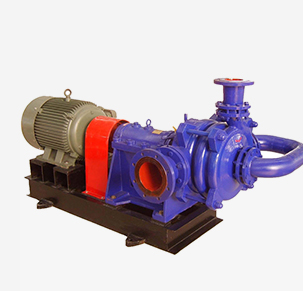Khmer
- Afrikaans
- Albanian
- Amharic
- Arabic
- Armenian
- Azerbaijani
- Basque
- Belarusian
- Bengali
- Bosnian
- Bulgarian
- Catalan
- Cebuano
- Corsican
- Croatian
- Czech
- Danish
- Dutch
- English
- Esperanto
- Estonian
- Finnish
- French
- Frisian
- Galician
- Georgian
- German
- Greek
- Gujarati
- Haitian Creole
- hausa
- hawaiian
- Hebrew
- Hindi
- Miao
- Hungarian
- Icelandic
- igbo
- Indonesian
- irish
- Italian
- Japanese
- Javanese
- Kannada
- kazakh
- Khmer
- Rwandese
- Korean
- Kurdish
- Kyrgyz
- Lao
- Latin
- Latvian
- Lithuanian
- Luxembourgish
- Macedonian
- Malgashi
- Malay
- Malayalam
- Maltese
- Maori
- Marathi
- Mongolian
- Myanmar
- Nepali
- Norwegian
- Norwegian
- Occitan
- Pashto
- Persian
- Polish
- Portuguese
- Punjabi
- Romanian
- Russian
- Samoan
- Scottish Gaelic
- Serbian
- Sesotho
- Shona
- Sindhi
- Sinhala
- Slovak
- Slovenian
- Somali
- Spanish
- Sundanese
- Swahili
- Swedish
- Tagalog
- Tajik
- Tamil
- Tatar
- Telugu
- Thai
- Turkish
- Turkmen
- Ukrainian
- Urdu
- Uighur
- Uzbek
- Vietnamese
- Welsh
- Bantu
- Yiddish
- Yoruba
- Zulu
Telephone: +86 13120555503
Email: frank@cypump.com
សីហា . 10, 2024 17:50 Back to list
Comprehensive Overview of Slurry Pump Specifications and Performance Characteristics for Efficient Operation
Understanding Slurry Pump Data Sheets
Slurry pumps play a pivotal role in various industries, particularly in mining, construction, and wastewater management. These pumps are designed to transport a mixture of water and solid particles, termed slurry. Understanding the data sheet of a slurry pump is essential for making informed decisions regarding the selection and application of the pump.
Components of a Slurry Pump Data Sheet
A typical slurry pump data sheet provides a plethora of information that can be classified into several categories performance specifications, mechanical specifications, materials of construction, and operational parameters
.1. Performance Specifications Key performance metrics are outlined in the data sheet, including flow rate, head, and efficiency. The flow rate indicates the volume of slurry that the pump can move within a certain period, usually measured in cubic meters per hour (m³/h) or gallons per minute (GPM). The head, measured in meters or feet, refers to the height to which the pump can raise the slurry. Efficiency is a critical metric that indicates how effectively the pump converts input power into hydraulic energy.
2. Mechanical Specifications This section covers the physical dimensions of the pump, including weight, inlet and outlet diameters, and overall height. Information on the drive type—electric motor, hydraulic, or diesel—is also vital. Additionally, this section may include the pump's rotational speed (RPM) and the type of bearings used, which can significantly impact maintenance and operational reliability.
slurry pump data sheet

3. Materials of Construction Slurry pumps are exposed to abrasive and corrosive environments; therefore, the materials used in their construction must be durable. The data sheet typically lists the materials for various components such as the casing, impeller, and liner. Common materials include cast iron, stainless steel, and high chrome alloys. Selecting the right material is crucial to prolonging the lifespan of the pump and minimizing maintenance costs.
4. Operational Parameters This section includes crucial operational details, such as the maximum operating temperature and pressure, suction lift capabilities, and the recommended slurry concentration. It may also provide information on the pump's tolerance to different types of solids, including size, shape, and density, which can influence the pump's performance and longevity.
Importance of Accurate Selection
Choosing the right slurry pump based on the data sheet is fundamental to ensuring efficient operations. An incorrectly sized or unsuitable pump can lead to operational inefficiencies, increased wear and tear, and unexpected downtime. For instance, selecting a pump with a flow rate too high for the application can cause excessive wear on the impeller and casing, while a pump with a low head may fail to adequately transport the slurry to the required destination.
Conclusion
In conclusion, understanding the slurry pump data sheet is essential for engineers and operators in various industries. By carefully analyzing the performance specifications, mechanical specifications, materials of construction, and operational parameters, one can make informed choices that enhance the reliability and efficiency of slurry transport systems. Investing time in this analysis can lead to improved functionality, reduced maintenance costs, and maximized productivity in slurry handling processes. As the industrial sector continues to evolve, the role of advanced slurry pump technology and accurate data interpretation will remain integral to operational success.
-
pipeline pump - Chi Yuan Pumps Co., LTD.|High Efficiency&Low Noise
NewsJul.31,2025
-
ISG Series Vertical Pipeline Pump - Chi Yuan Pumps Co., LTD.|High Efficiency, Energy Saving, Low Noise
NewsJul.30,2025
-
ISG Series Vertical Pipeline Pump- Chi Yuan Pumps|High Efficiency&Low Noise
NewsJul.30,2025
-
ISG Series Vertical Pipeline Pump-Chi Yuan Pumps Co., LTD.|High Efficiency&Energy Conservation
NewsJul.30,2025
-
ISG Series Vertical Pipeline Pump - Chi Yuan Pumps Co., LTD.|Advanced Hydraulic Design&Energy-Efficient Solutions
NewsJul.30,2025
-
ISG Series Vertical Pipeline Pump - Chi Yuan Pumps Co., LTD.
NewsJul.30,2025










